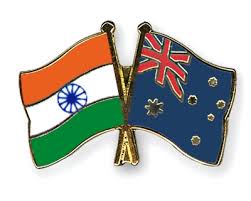
Melbourne: Indo-Australian “natural partnership” saw a steady growth in 2019 on several fronts, especially in the defence sector primarily due to a common concern about China’s increasing military presence in the Indo-Pacific.
However, differences remained over New Delhi’s alleged restrictive trade policies and its stance over a regional free trade pact.
The trade relations also grew between the two sides with the two way trade currently standing at over 29 billion Australian dollars even without a free trade agreement (FTA).
India has been ranked Australia’s fourth-largest export market. However, it’s still considered to be the most untapped one, much below China, which is at over 194 billion Australian dollars and Japan at over 77 billion Australian dollars.
Australia has identified India as a huge market.
The year 2020 is poised to open on a high note for the bilateral ties with Prime Minister Scott Morrison’s first official visit to India in January.
Morrison, who described Australia’s relationship with India as a “natural partnership”, has said that his upcoming visit to New Delhi “will be another step in cementing India in the top tier of Australia’s partnerships”.
He also backed the Quadrilateral (Quad) grouping.
Australia’s Opposition Labor Party has also called for enhancing ties with India, signalling bipartisan support for bolstering ties with New Delhi.
Opposition’s foreign affairs spokeswoman Penny Wong called “Australia’s relationship with India as central to the region”.
India is set to release its economic strategy for Australia when Morrison will be in New Delhi with a high-level business delegation.
This latest document authored by former diplomat Anil Wadhwa will respond to Australia’s India strategy 2018 report prepared by former diplomat Peter Varghese.
On defence front this year, Australia and India’s cooperation on shared maritime security interests in the Indian Ocean rose to a new level with the AUSINDEX naval exercise held in April which was a useful step towards more sophisticated interactions in the maritime space.
It involved a large Australian defence task force, matched by India, including submarines and maritime surveillance aircraft from both sides, practising anti-submarine warfare.
Few of the main challenges that continued to bother the relationship were India’s trade restrictive agriculture policies and its recent stand on Regional Comprehensive Economic Partnership (RCEP).
Trade Minister Simon Birmingham recently said Australia was deeply concerned with India’s sugar subsidies that, he claimed, were vastly in excess of its limits under WTO rules.
“They have contributed to a decrease in the global price of sugar which is hurting our Australian producers and those elsewhere,” he said, adding that even though Australia respected India’s decision on the RECP it remained hopeful for it to join when it was ready.
The year also witnessed the settlement of the decade old legal battle for the controversial Adani coal mine in central Queensland when the billion dollar project received its final environmental approval in June.
Even though Australia and India have come a long way, there are still several challenges ahead to take this relationship to the next level, go beyond the curry, cricket and the Commonwealth.








